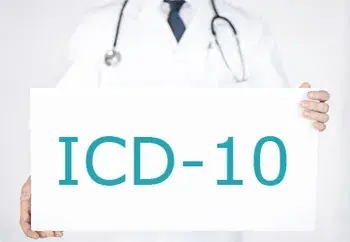One of the most important considerations practices must have while preparing for ICD-10 is tackling the revenue loss expected to occur just after ICD-10 implementation. The biggest costs will come to practices from lost productivity and claim denials due to coding mistakes. Though bigger players may survive this sudden shortfall with their cash reserves, it may be disastrous for small practices that have already invested in ICD-10 preparations and are operating at a very tight margin. If you prepare well and employ accurate medical coding services for services provided to patients, you can reduce revenue loss.
In an earlier blog post, we talked about how to save your practice bottom line while adopting ICD-10. We discussed coder productivity in that post and suggested several measures to increase productivity such as giving education and training to the coders, measuring coder productivity and enhancing the coding team. Here, we are going to discuss the revenue cycle preparations based on the crucial factors that are closely associated with practice revenues and final preparations recommended by the Healthcare Information and Management Systems Society (HIMSS) to deal with the impending ICD-10 implementation.
Budget Neutrality
Budget neutrality under revenue cycle is a method of calculation in which the estimated aggregate payments in any given year for services under the old method remain the same with the new trend. To be more specific, we can say it is the expectation that MS-DRG system will work the same after ICD-10 implementation. However, CMS has not indicated that the calculation of MS-DRG payment under ICD-10 will be budget neutral since the differences between ICD-9 and ICD-10 will result in some payment redistribution. Thus, there will be a shift in reimbursement after transition. Even so, it is very important to ensure that such kind of changes will not affect practices drastically. Therefore, you should determine the financial impact of ICD-10 reimbursement on your practice based on the severity, case-mix, co-morbid conditions, complications and other relevant factors. It is also necessary to evaluate whether the reimbursement will be higher or lower post ICD-10 transition.
Medical Necessity
Medical necessity is one of the major reasons for claim denials which results in reduced cash flow and revenue and leads to additional costs associated with resubmission. Therefore, it is indispensable for practices preparing for ICD-10 implementation to make sure that the medical necessity requirements specified by the carrier are evaluated, understood and put into practice. However, there are two hurdles that make this task complicated – variations in choosing specific diagnoses that will meet medical necessity requirements by payers and increased number of diagnoses that are applicable to each medical condition. Take the following steps to avoid claim denials due to medical necessity after ICD-10 transition.
- Study each type of coverage thoroughly to understand specific ICD-10 diagnoses that will meet medical necessity and determine which all elements must be included in the clinical documentation to justify medical necessity with ICD-10.
- The process required to obtain an ICD-10 compliant diagnosis should be documented and explained well before the ICD-10 implementation.
You should give appropriate training to your staff regarding this.
Payer Contracts
Existing payer contracts are all based on the ICD-9 code set. You will be required to renegotiate new payer contracts using ICD-10. To determine whether the contracts are favorable, you should thoroughly understand ICD-10 medical coding.
HIMSS Recommendations
HIMSS recommends some final revenue cycle preparations to address revenue loss effectively, which are:
- Revenue cycle managers should focus on eliminating current claims backlogs, if any and resolving denial issues. File claims for services prior to October 1 as soon as possible after the service using ICD-9 codes. Work closely with health plans on pending claims so as to adjudicate them and get paid before October 1.
- Managers should review reports generated to track costs and revenue to determine whether these reports are dependent on diagnosis codes in any way. If they are dependent, revise the reports to reflect the higher level of specificity with ICD-10. If you have no such reports on revenue or A/R, construct them for implementation.
- Collect baseline metrics to compare the operations carried out today and operations after October 1. The recommended metrics comprised of A/R pending days, cash flow, time from service to claims submission, time from service to claims payment by health plan and number of denials by health plan. If you have the current baseline figures and similar figures post ICD-10 implementation, you can determine whether there is an impact on revenue cycle owing to the new coding system, what exactly that impact is and what kind of measures should be taken to address the impact.
- Practices should develop contingency plans that can effectively address reduced cash flow owing to coding backlogs, increased claims and other issues.


